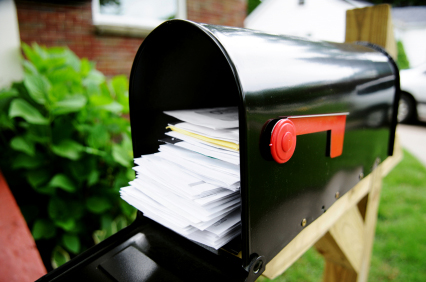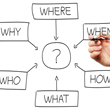Using Direct Mail For A New Product Launch
 The purpose of direct mail is to get people to act. When launching a new product, action in the form of sales is what you need most. Direct mail is the most straightforward way to bring your product to the one buying it. Why use direct mail? What are the most effective forms of it?
The purpose of direct mail is to get people to act. When launching a new product, action in the form of sales is what you need most. Direct mail is the most straightforward way to bring your product to the one buying it. Why use direct mail? What are the most effective forms of it?
Why use direct mail to launch your new product?
- You can target people very precisely – Direct mail lets you start with a small test audience. You can grow the amount of people that you’re marketing to, based on the response that you get.
- It protects you against too great a response – While this sounds like a good problem to have, too large a response can be just as bad as no response at all. Often, if you run a magazine ad, you don’t know if you’ll get 100 or 100,000 responses. If you can’t react and effectively serve your clients, you’ll damage your relationship before it’s even started.
- Allows you to get your campaign moving quickly – Small to mid-size campaigns can go from the planning stages to in the mail within the span of a few days. This is much faster than other traditional advertising campaigns for TV or radio, where the process can drag out for months.
- Gives you flexibility – By making slightly different offers to randomly selected portions of your target audience, you’ll get different results. This will tell you what offers work best for your product. Keep trying to beat your previous mailings to get better and better response rates.
- Personalize the message – Because direct mail allows you to work with such a highly targeted audience, you can deliver messages that are relevant only to the specific group that you’re mailing to.
Effective forms
- Sales letters– Usually made up of two elements – the envelope itself and its contents.
- The Envelope – By varying the sizes and colors of your envelope, you attract attention and make your new product seem more exciting to your prospects. It will stand out better in the endless sea of mail. The envelope carries your sales letters, flyers and/or sell sheets to your prospects. Aside from holding together the contents, an envelope has only one job: getting opened. Use teaser copy that involves your prospect’s interests or identity and relate it to the contents of the envelope – things like “For homeowners only” or “Exclusive offer for boaters inside.” You want them to know that they’re getting something new, free, or valuable. Prompt them to open the envelope. Something like “FREE Offer! See inside for details…” Use photos and illustrations. They can convey ideas about products and services in ways that words never can.
- Letter – The letter works great because it’s inexpensive and gives you the chance to fully explain your product or service to your target. Because this may be a new item that people are not familiar with, it’s important to craft an offer that is especially motivating. Use a strong call to action that will motivate the recipient to do something.
- Sell Sheets – Sell sheets should be used to support the information found in your sales letter, but shouldn’t be dependent on it; make sure that they can stand on their own. They can give you the opportunity to use photos, charts and graphs to explain why they need your product. They can go into a great deal of depth and give the benefits of your product. You can include information about every option and dimension, plus where and how prospects can buy your product.
- Self-Mailer – A self-mailer is essentially a single sheet of paper folded in half with your mailing information and marketing message printed on the outside. Inside, they are a cost effective way to present product photos, graphs, charts and other images of your new product.
- Postcards – The simplest of the mailing products. A postcard gives you the cost savings associated with the self-mailer. Since a lot of direct mail is never even opened, a postcard overcomes this obstacle. A postcard is already “open,” so the target almost has no choice but to see your message. Consider using an oversize postcard which gives you more room for your message. Larger size costs slightly more to print and mail, but the added canvas definitely makes your piece stand out.
- Media mailers – If you need to provide information to potential clients in the form of books, manuscripts, CDs, or certain other educational materials, sending them via Media Mail can save you a lot of money. Also known as “Book Rate”, they’re not allowed to contain advertising, but eligible books can contain announcements for book releases.
- CD Mailers – By containing all of your marketing materials in one place, a CD mailer can be a highly effective way to provide prospects with a lot of information about your new product all at once. They can be set to auto load your website, or even presentations and videos about your product.
Conclusion
Direct mail is not the total solution to marketing your new product. You need to support it with other media. Remember the rule of seven. This is an old marketing adage that states that a prospect needs to see or hear your marketing message at least seven times before they’ll take action and make a purchase. This isn’t set in stone, but it does tell you that you can’t just rely on one method and think you’re done. It’s an on-going process if you want to succeed.
Posted in Direct Marketing, Marketing, Product Launch Marketing
Don`t neglect your friends, share this right away.





Leave a Reply